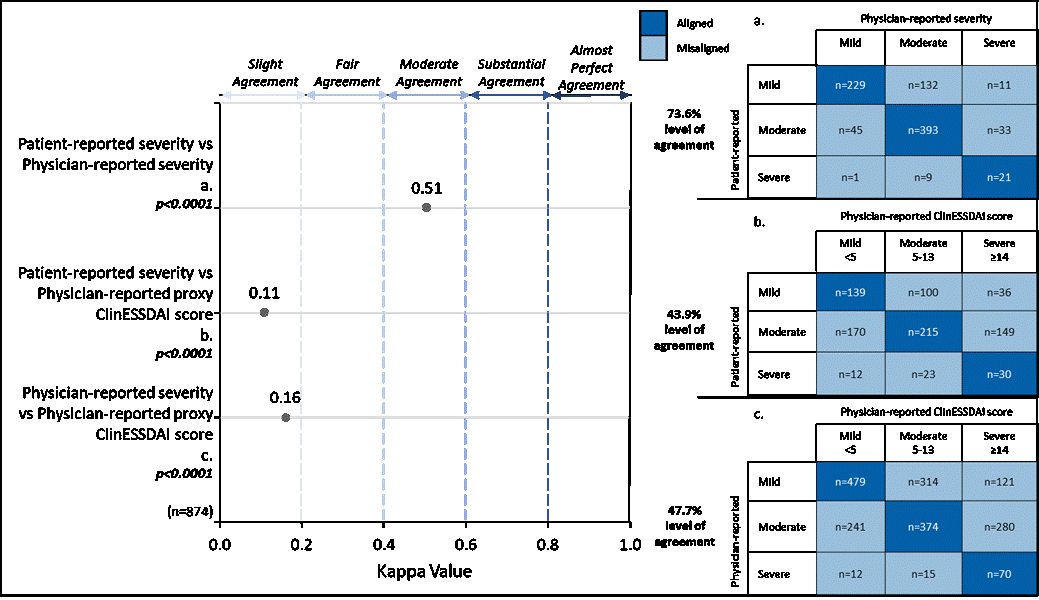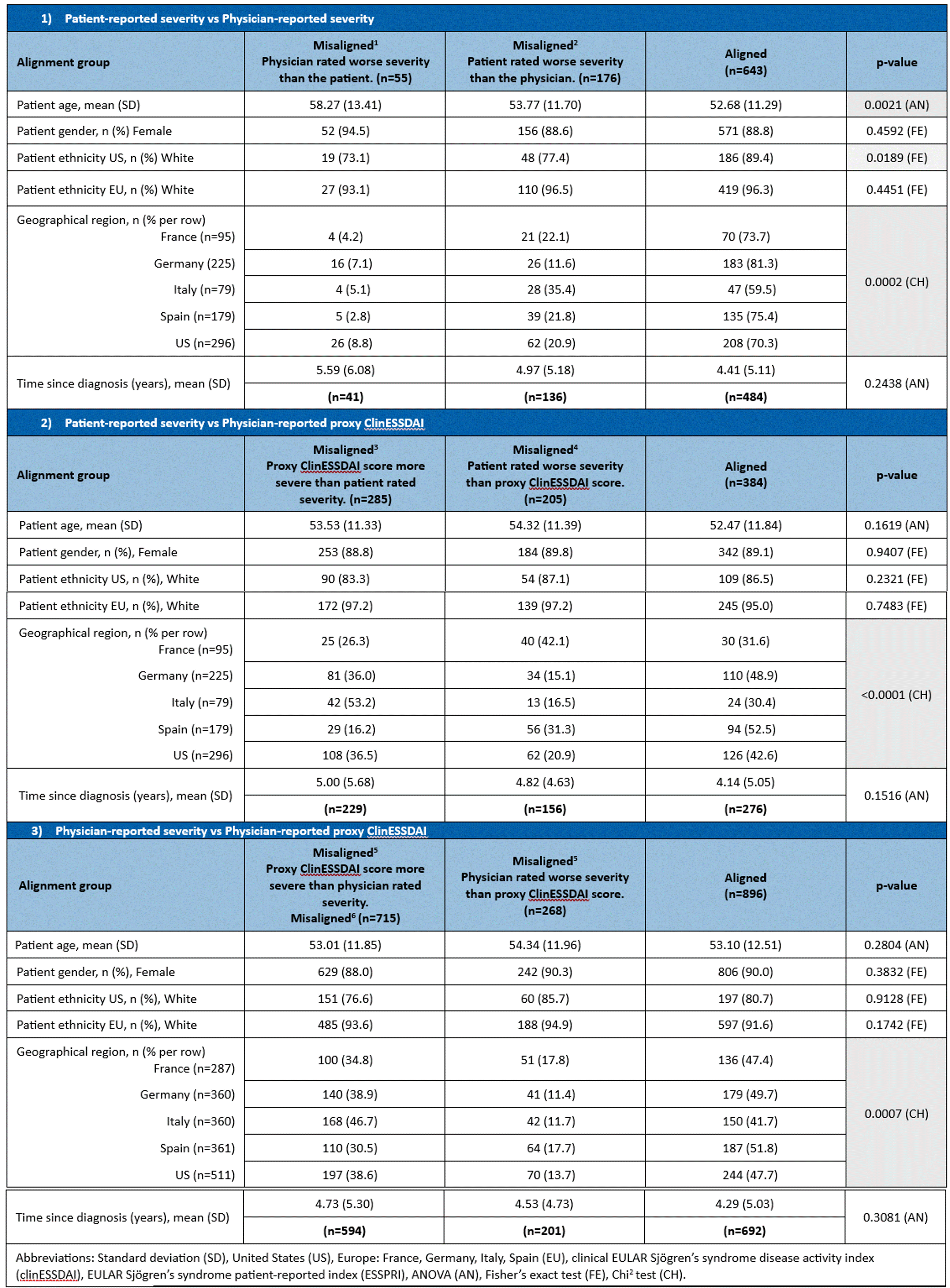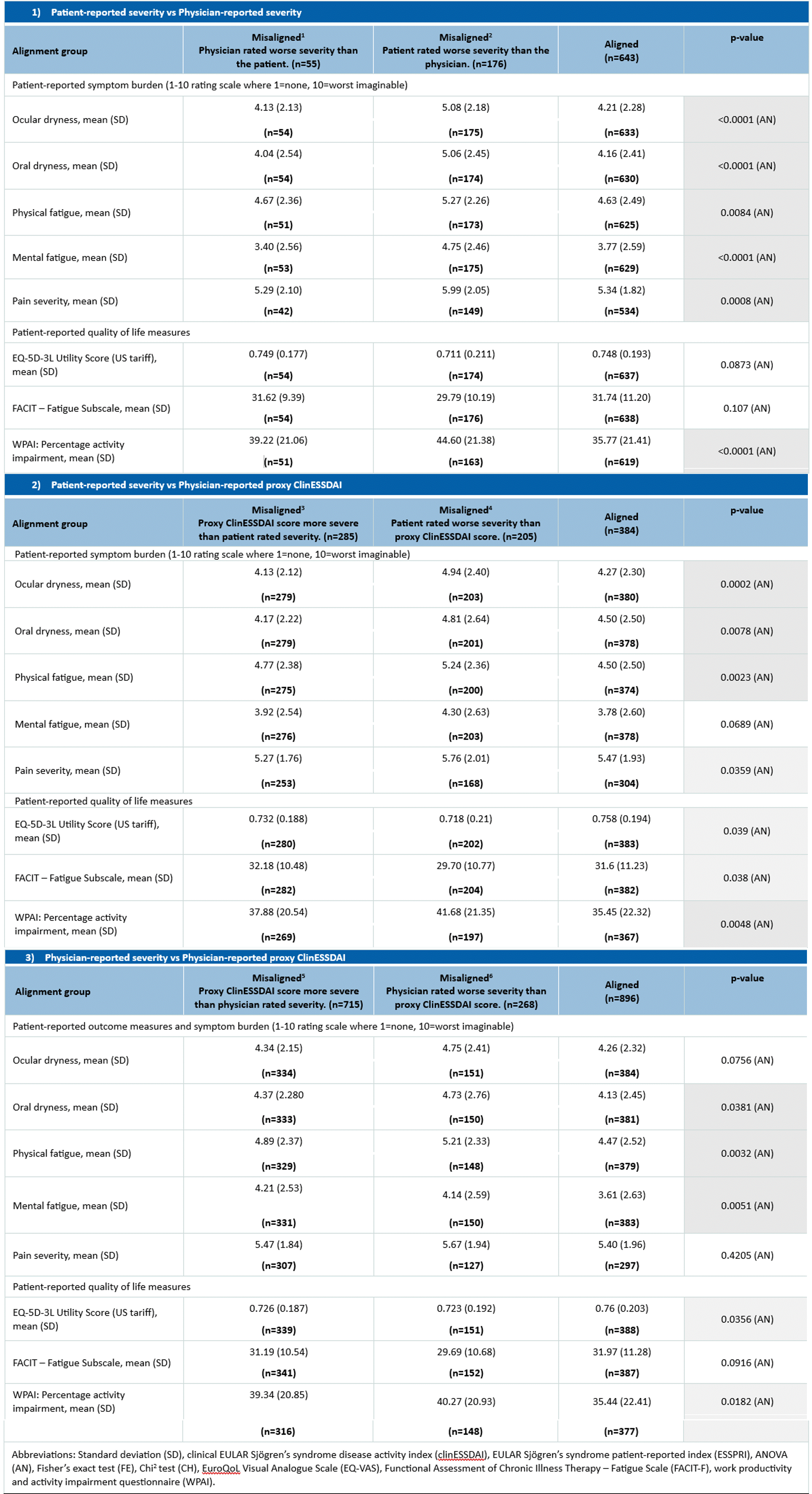Session Information
Session Type: Poster Session B
Session Time: 10:30AM-12:30PM
Background/Purpose: Sjögren’s disease (SjD) has a high disease burden in affected patients, with no licensed treatments currently available. The Clinical EULAR Sjögren’s syndrome disease activity index (ClinESSDAI) is a standard measurement of systemic disease activity. However, the impact of patient and physician alignment on patient outcomes remains poorly understood. We aimed to examine the degree of alignment between patient- and physician- perceived disease severity and alignment between patient- and physician-perceived disease severity with proxy ClinESSDAI scores.
Methods: We analyzed data from the Adelphi Real World Sjögren’s Disease Specific Programme™, a cross-sectional survey of rheumatologists and patients with SjD across France, Germany, Italy, Spain, and the US from June – October 2018. Physicians reported perceived disease severity (mild, moderate, severe) and systemic involvement to calculate a proxy ClinESSDAI score for consulting SjD patients with systemic involvement. Patients self-reported their perceived disease severity (mild, moderate, severe), dryness, fatigue, and pain (scored 1–10, 10=worst imaginable), and quality of life via EQ-5D-3L, Functional Assessment of Chronic Illness Therapy – Fatigue Scale, and Work Productivity and Activity Impairment questionnaire.
Kappa analysis ( 1 = perfect agreement, 0 = agreement of chance, < 0 = agreement less than chance) was used to assess the degree of alignment between 1) patient- and physician-reported perceived disease severity; 2) patient-reported perceived disease severity and proxy ClinESSDAI score; 3) physician-reported perceived disease severity and proxy ClinESSDAI score. ANOVA, Fisher’s exact and Chi2 tests compared characteristics between alignment groups; p< 0.05 indicated statistical significance.
Results: Rheumatologists (n=319) reported data on 1,879 patients with SjD. Patient- and physician-perceived severity showed a 73.6% level of agreement (κ=0.51, moderate agreement); patient-reported severity and proxy ClinESSDAI score of 43.9% agreement (κ=0.11, slight agreement); physician-reported perceived severity and ClinESSDAI score of 47.7% agreement (κ=0.16, slight agreement) (all p< 0.0001; Figure 1). Patient characteristics are summarised in Table 1. Geographical region differed significantly between alignment populations for kappa groups (all p< 0.05; Table 1). Patients reporting greater perceived severity than their physician and ClinESSDAI score, had higher patient-reported dryness, pain, and fatigue scores (all p< 0.05; Table 2, groups 2, 4) and percentage activity impairment was significantly different across kappa groups (all p< 0.05; Table 2).
Conclusion: Geographical differences in alignment suggest regional or cultural inconsistencies in patient management may play a role in perceptions of disease severity. The impact of dryness, pain, and fatigue may be underestimated by physicians when assessing patients’ disease severity, with more misalignment seen where the proxy ClinESSDAI score indicated worse severity. A more holistic approach is needed to assess the impact of SjD on quality of life, alongside future research to fully assess the impact of systemic activity on the patient experience.
To cite this abstract in AMA style:
Ng W, Bouillot C, MASSEY N, Hughes M, Barton V, Castellano G, Barat A, Kenney G, Marvel J. Impact of Patient and Physician Alignment on Sjögren’s Disease Severity, a Real-World Survey on Patients’ Clinical Outcomes and Health-Related Quality of Life [abstract]. Arthritis Rheumatol. 2024; 76 (suppl 9). https://acrabstracts.org/abstract/impact-of-patient-and-physician-alignment-on-sjogrens-disease-severity-a-real-world-survey-on-patients-clinical-outcomes-and-health-related-quality-of-life/. Accessed .« Back to ACR Convergence 2024
ACR Meeting Abstracts - https://acrabstracts.org/abstract/impact-of-patient-and-physician-alignment-on-sjogrens-disease-severity-a-real-world-survey-on-patients-clinical-outcomes-and-health-related-quality-of-life/



